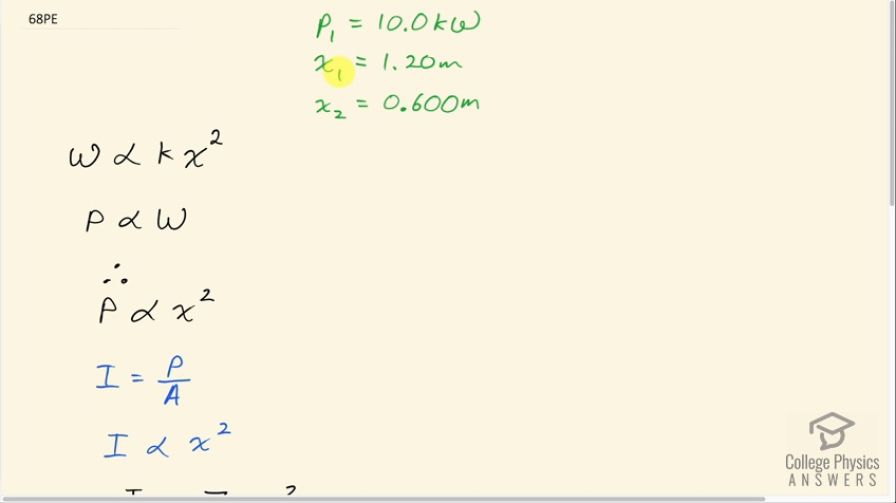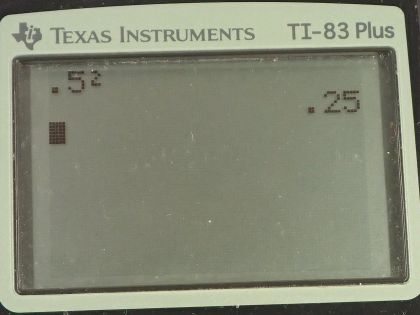Question
Suppose you have a device that extracts energy from ocean breakers in direct proportion to their intensity. If the device produces 10.0 kW of power on a day when the breakers are 1.20 m high, how much will it produce when they are 0.600 m high?
Final Answer
Solution video
OpenStax College Physics, Chapter 16, Problem 68 (Problems & Exercises)

vote with a rating of
votes with an average rating of
.
Calculator Screenshots
Video Transcript
This is College Physics Answers with Shaun Dychko. A generator is creating energy from ocean waves and in the first case when the ocean waves have a height of 1.20 meters, the generator is producing a power output of 10.0 kilowatts. And then the second case, the waves have a height of 0.600 meters and the question is what will the power output be then? Well the amount of work that goes into lifting up a wave to its height x is proportional to some restoring force constant often called the spring constant but in this case, it has to do with gravity and it's multiplied by the displacement from equilibrium squared. Now since work is proportional to x squared, we know that power is proportional to work because power is the rate at which work is done or in other words, work divided by time so we can say power is proportional to work and since work is proportional to the amplitude squared, we can say that the power is also proportional to the amplitude squared. Now intensity is power divided by area and so we have established that P is proportional to x squared and since intensity equals some thing multiplied by P— that thing being 1 over the area— we can say that intensity is proportional to x squared as well. So intensity in the first case is something multiplied by x 1 squared. I didn't have to write this z here but I did it anyway just because I like to deal with equal signs; when you say that something is proportional to something, what you are saying is that it equals some factor multiplied by that thing. So that means I 1 is the factor which we'll just invent— it's called Z— multiplied by x 1 squared. And in the second case when the waves are smaller, it's gonna equal the same constant of proportionality because it's the same generator with the same area and so on and so we can use the same factor Z but now it's multiplied by a new height of the wave, x 2 squared. And this Z will cancel anyway and so we don't need to know what it is we'll go I 2 divided by I 1 is Zx 2 squared over Zx 1 squared which is x 2 over x 1 squared 0.600 meters divided by 1.20 meters squared, which is 0.25. So we have established how intensity two is related to intensity one and it's gonna be one quarter of I 1. Now the power output in the second case is what we are interested in; it equals the area of this generator which we don't know but turns out it won't matter multiplied by I 2 and I 2 we know is one quarter of I 1 and then I 1 is P 1 divided by A and the area's cancel and we are left with P 2 is 0.25 times P 1. So 0.25 times 10.0 kilowatts is 2.50 kilowatts and this would be the power output when the waves are half as high.
Comments
I feel like you made this explanation way more confusing than what it actually needs to be, I'm lost.


